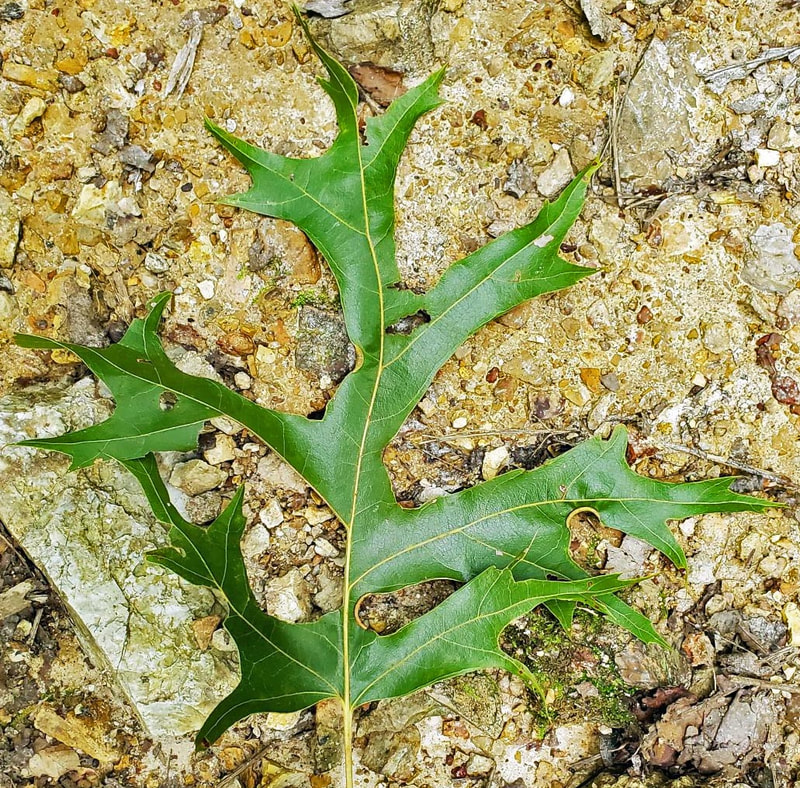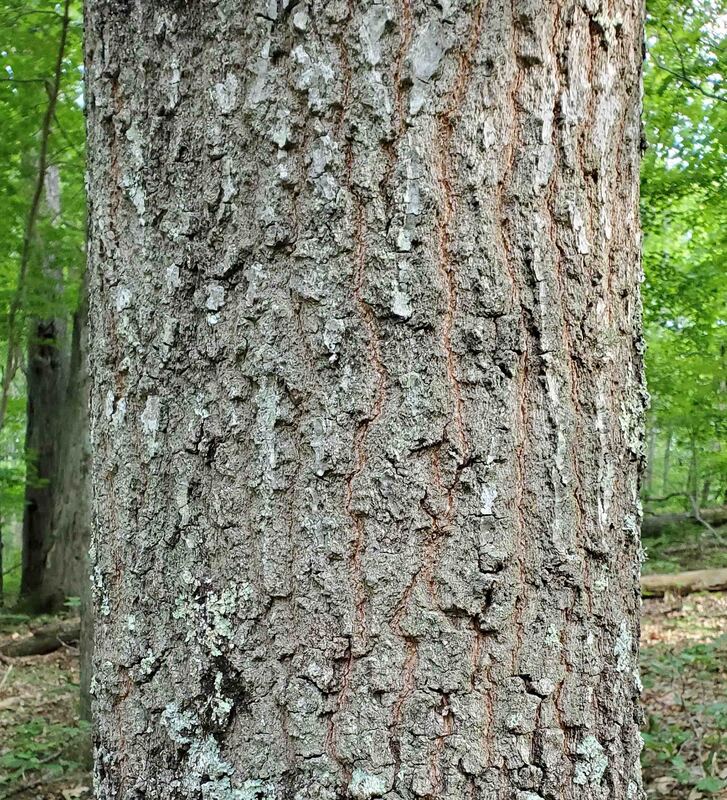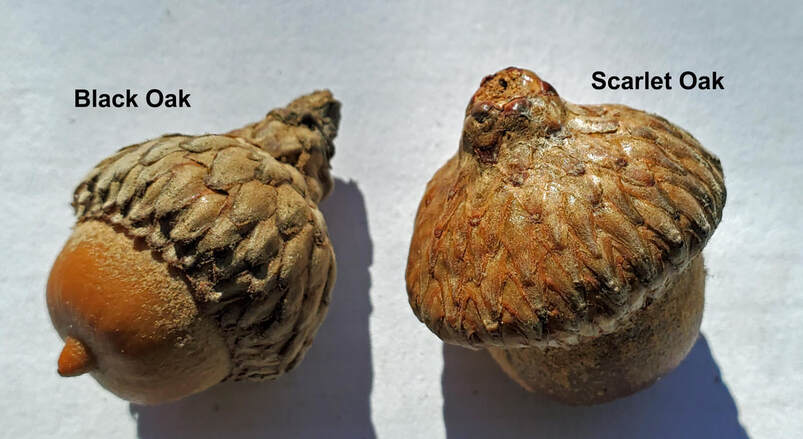Scarlet Oak
Scientific Name: Quercus coccinea
— pronounced KWER-kus kok-SIN-ee-a
— Quercus, Latin for oak; coccinea, Latin for scarlet.
Beech Family (Fagaceae): beeches, chestnuts, and oaks.
— pronounced KWER-kus kok-SIN-ee-a
— Quercus, Latin for oak; coccinea, Latin for scarlet.
Beech Family (Fagaceae): beeches, chestnuts, and oaks.
Scarlet oak leaves have 5-9 pointed bristle-tipped lobes with deep sinuses (spaces between lobes). The sinuses tend to be “C” shaped. The upper leaf surface is shiny. The underside is hairless, except possibly in the vein axils.
The bark of mature trees has scaly vertical ridges separated by narrow furrows. The inner bark of the trunk and twigs is red.
If present, the acorns are the easiest way to identify scarlet oak. They are 1⁄2-1” long, with the cap covering about half the nut. The cap scales are shiny and tightly appressed. Also, the tip of the nut is often surrounded by one or more circular scratches or pits.
The bark of mature trees has scaly vertical ridges separated by narrow furrows. The inner bark of the trunk and twigs is red.
If present, the acorns are the easiest way to identify scarlet oak. They are 1⁄2-1” long, with the cap covering about half the nut. The cap scales are shiny and tightly appressed. Also, the tip of the nut is often surrounded by one or more circular scratches or pits.
Scarlet oak is an eastern species commonly found on dry ridges. It can also grow on wetter bottomland sites such as this, but good drainage is required. Scarlet oak usually occurs in the early-successional stages of a forest. When this tree dies, it will probably be replaced by a more shade-tolerant species.
For more photos and ID help: VA Tech Dendrology Fact Sheet
Interesting Facts:
For more photos and ID help: VA Tech Dendrology Fact Sheet
Interesting Facts:
- The common name refers to the bright red fall foliage.
- Unlike most of our other oaks, scarlet oak is fast-growing and short-lived, attaining a height of about 80 feet, with a lifespan of about 80 years.
- Because of its hardiness, fast growth, and colorful fall foliage, scarlet oak is a choice oak for urban plantings.



